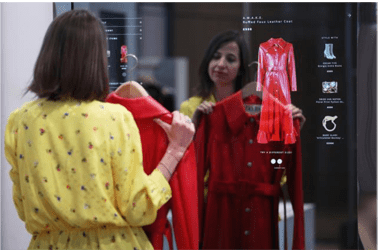By Guest Columnist, Cathryn Coyle
Since the advancement of brick and mortar stores throughout the 1900s, consumers have enjoyed the experience and social aspect of window shopping and moving from store to store. Malls and shopping centers became places where people would come together to shop — at least until the beginning of eCommerce, which is when in-person sales began to slowly decline.
Over the past three years, retailers have seen a major drop in physical store business due to continuous advancements in the eCommerce and digital world. It has become crucial for brick and mortar stores to focus on increasing in-person sales. Many Americans live busy lives and have realized that online shopping can save them time, which they can spend crossing other things off their schedules. Especially since the global pandemic hit, Amazon and other companies have been finding new ways to offer convenience to their consumers, encouraging them to continue to spend their dollars from the comfort of their own homes.
While many retailers have been shutting down due to these changes, other brick and mortar retailers have been adapting and finding other opportunities to shift their stores to stand out against the rest. Realizing that consumers are looking for more than just products being sold in a building, they have been finding ways to entice their customers to shop in stores. Different retailers have been creating an experience for their consumers that online retailing cannot reproduce. For example, some do this by taking their brand and finding a niche way to produce entertainment, so not only will the consumer be shopping in-store, but they will also feel more connected to the brand.

A recent retail trends article (https://www.thestorefront.com/mag/7-case-studies-prove-experiential-retail-future/ ) mentioned how it is important for retailers to stress five elements to help create a memorable shopping experience: interactiveness, originality, connectedness, unexpectedness, and reliability. Ensuring these factors will provide stores with new traffic and push in-store sales. For example, Farfetch’s goal was to create an experience that takes “the magic of the physical store experience and bring it together with the advantages of the online and digital experience.” This concept provides an effortless experience for their consumers; the moment they enter the store there are sign-in screens that allow them to see their purchase history and wish list. Furthermore, the dressing rooms include smart mirrors that engage with the consumers if they need a different size or product.
Another example of a store producing a unique experience is The House of Vans in London. The store consists of a cinema, cafe, live music venue, art gallery, and a concrete ramp and street course. This experience not only allows their customers to explore the merchandise and art of street fashion, but also creates a space for the consumers to engage with one another.
The future of retail lies in the hands of companies willing to capitalize on opportunities for new growth. Now more than ever, companies need to listen to their consumers’ needs and wants in order to create an experience that will keep them coming back and continue to drive in new foot traffic.
Photo Credit: Bloomberg

Cathryn Coyle, Student and Intern, Western Michigan University
Fashion Merchandising Major, with Minor in Marketing
Cathryn is beginning her senior year at Western Michigan University, with graduation plans for Spring 2021. Cathryn joined the KDI Consulting team June of 2020.

